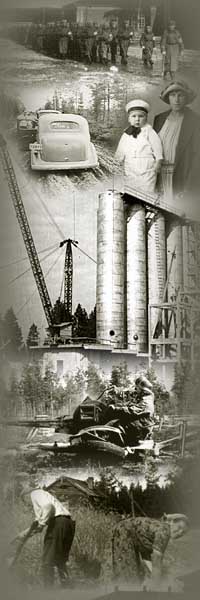 |
 |
|
Summary:
Osmo Palonen,
Industrialisation of Northern Finland – its political supporters and opponents
State-owned companies have been major players in the industrialisation of Northern Finland. When these operations have, during the last two decades, been privatised and sold it is worth
while exploring which political players were supporting state-owned industry and who were
the opponents as well as what kind of motives and goals they had. The period and events in
establishing the heavy metal industry started with the project to establish the Otanmäki iron
mine in the late 1940s and ended with the decision to build a stainless steel plant in Tornio in
the early 1970s. In these political processes the national politicians, like the MPs, were working
with the regional politicians and other provincial activists who were heavily involved. Local,
regional and provincial players organised demonstrations and the so called fur hat delegations
to travel to Helsinki. It is worth remembering that Finland was, in this period, a highly political
society where political parties were keen and able to affect government operations.
The traditional industrialisation policies of the political parties were confused in 1952 when
Urho Kekkonen, at that time the Prime Minister and MP of the Agrarian League, published his
pamphlet Onko mallamme malttia vaurastua? (Has the nation the patience to get wealthy?). He
demanded in his book that the recently published proposals of the industrialisation committee
led by social democrats had to be implemented in Northern Finland and financed by taxes. He
didn’t trust the private sector industrialists in this industrialisation action. Kekkonen and the Left
considered that industrialisation was the means not only to solve actual unemployment and to
stop the use of billions on relief aid jobs in the North but also as a more permanent solution to
employ the baby-boomers, who would need new job opportunities in the 1960s.
The question to support or oppose state-owned industrialisation in Northern Finland cut
Kekkonen’s party in half. Those who agreed with him allied with the Left but the politicians
from the wealthier South and the Southwest were against the active role of government in
business life. However, the MPs and other politicians from the North were almost unified
in supporting these projects, independent of which party they belonged to. One of the most
interesting industrialisation projects was a bill to build and long-term finance a state-owned
steel mill in Raahe, a town with the deepest unemployment problems in the country. A majority
of MPs signed the bill and the law was accepted two years later by a majority of 125 – 62. As
the law was based on a bill, the government had the option not to execute the law. Nevertheless,
the opinion from the parliament was so weighty that the government established the limited
company Rautaruukki, with minority private sector partners, that finally built the mill in the
Raahe region.
In the studied period the Otanmäki iron mine, the fertilizer mill Typpi Oy, the Raahe iron and
steel mill of Rautaruukki and the stainless steel plant of Outokumpu in Tornio were established.
All these processes were political; the de facto decisions were made either in the parliament or
the ministry. State-owned industry has been in the key role in the modernisation of Northern
Finland, in particular when the list above can be completed by government actions in the forest
industry. The key roles in carrying out these political processes have been taken by the people
in the North’s politicians, opinion-makers and activists but the influence of Dr. Urho Kekkonen,
the most prominent politician of the era, should not be overlooked.
Faravid
32/2008
|
 |